Abstract
OBJECTIVES: This study sought to compare the cost-effectiveness of a school-based hepatitis B vaccine delivery program with that of a vaccine delivery program associated with a network health maintenance organization (HMO). METHODS: The vaccination program enrolled 3359 sixth-grade students from 18 middle schools in Denver, Colo. Immunization status and direct and indirect program costs were compiled. The sensitivity of the outcomes was assessed by simulation methods. RESULTS: The per-dose cost-effectiveness ratio for the school-based delivery system was $31. This cost-effectiveness ratio remained stable when the model was simulated with costs that were underestimated or overestimated by 20%. In the network HMO, the direct cost per dose was $68 and the societal cost was $118 when the child's father worked full-time and the mother worked part-time. There is less than a 5% chance that the network HMO-based vaccination program could be more cost-effective than the school-based program. CONCLUSIONS: The cost per dose of the school-based program was significantly less than that of the network HMO-based program, because in the school program government-purchased vaccine was available at a lower cost and parents did not incur work-loss costs.
Full text
PDF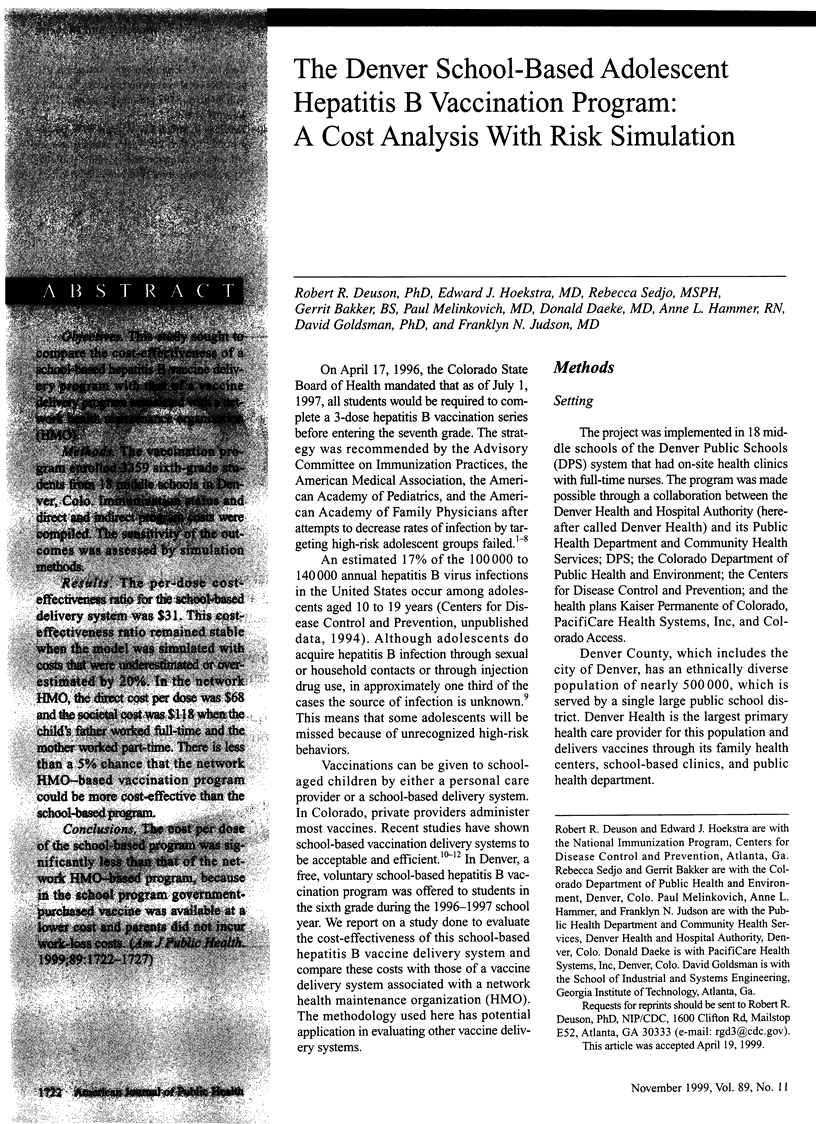
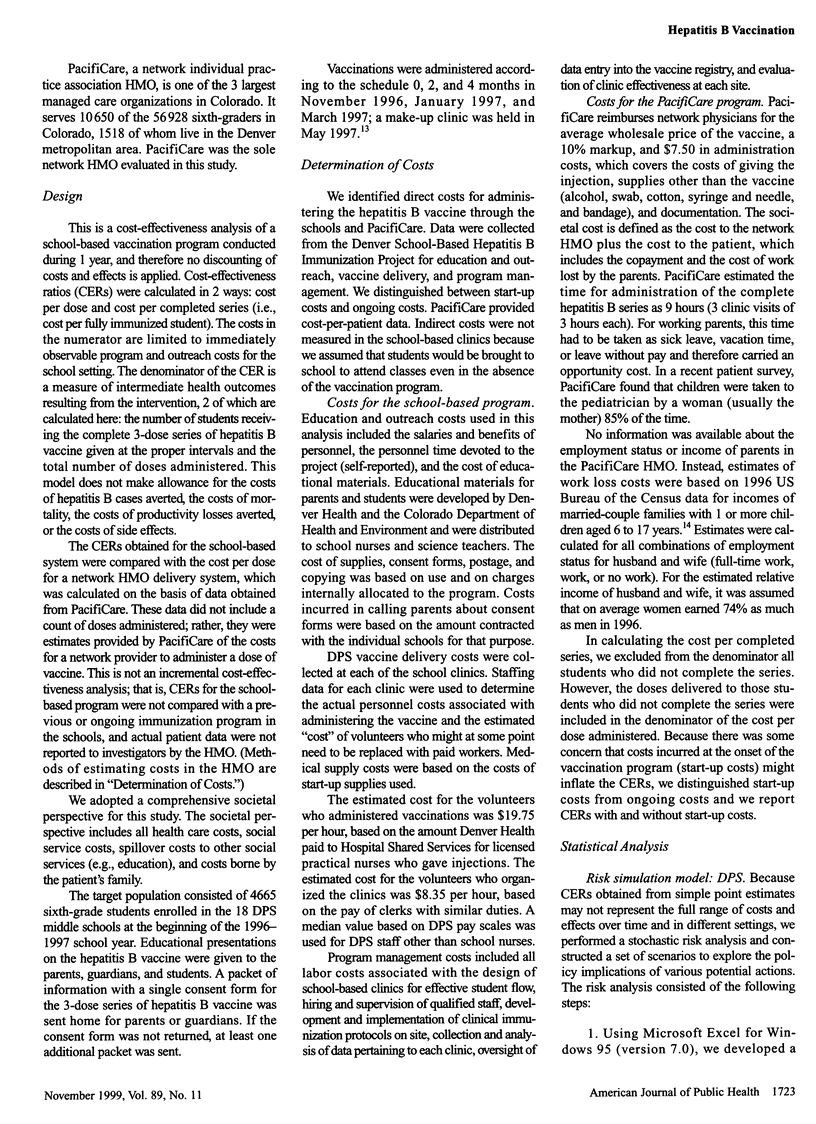
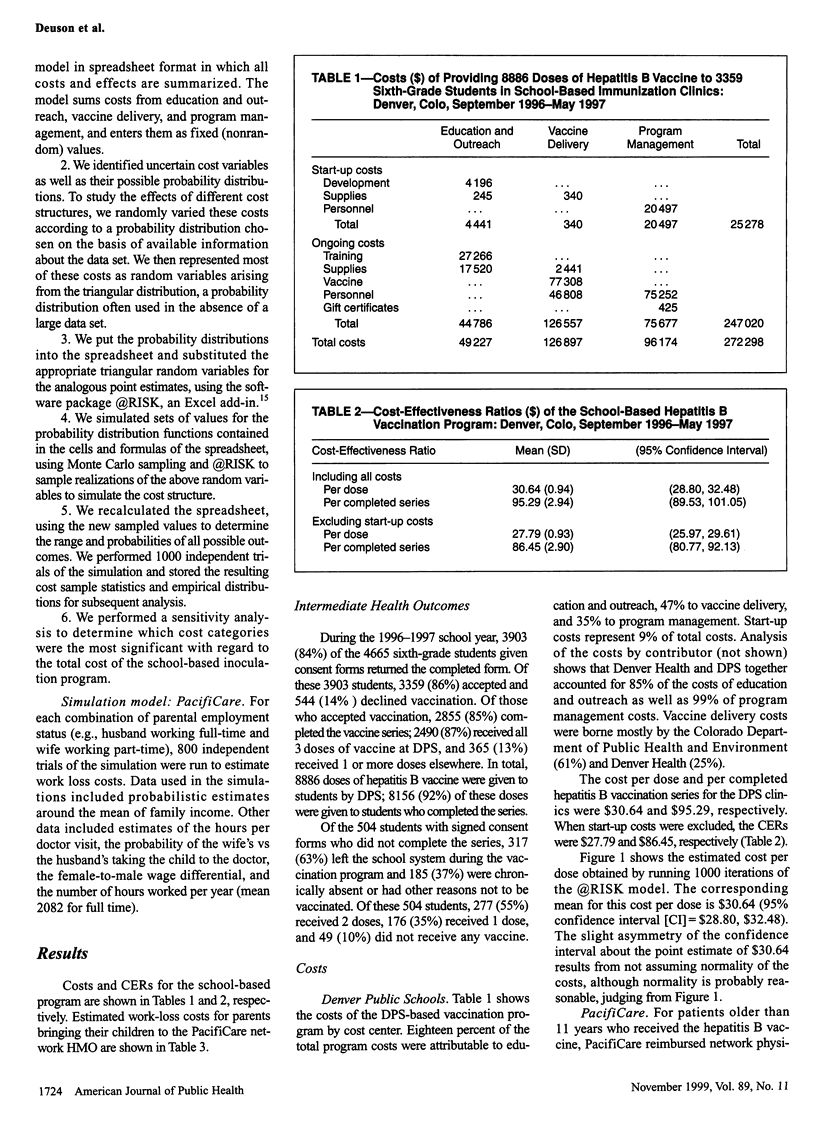

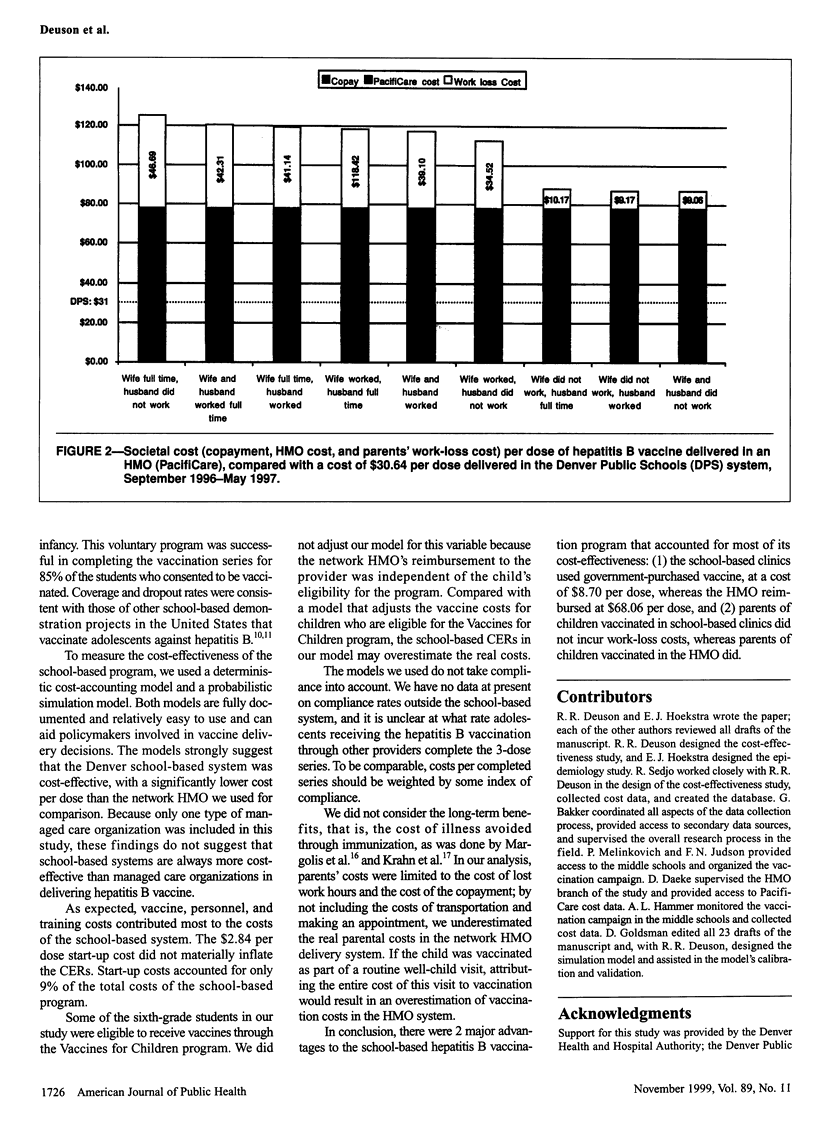
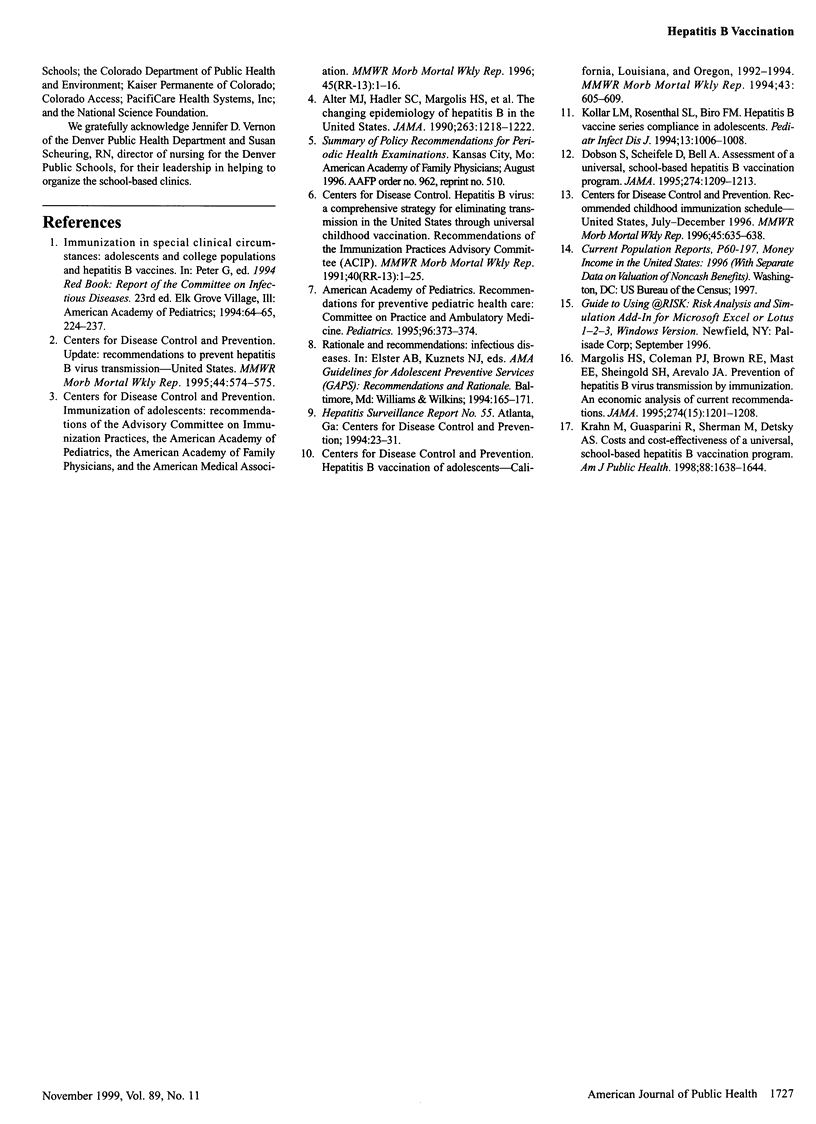
Selected References
These references are in PubMed. This may not be the complete list of references from this article.
- Alter M. J., Hadler S. C., Margolis H. S., Alexander W. J., Hu P. Y., Judson F. N., Mares A., Miller J. K., Moyer L. A. The changing epidemiology of hepatitis B in the United States. Need for alternative vaccination strategies. JAMA. 1990 Mar 2;263(9):1218–1222. [PubMed] [Google Scholar]
- Dobson S., Scheifele D., Bell A. Assessment of a universal, school-based hepatitis B vaccination program. JAMA. 1995 Oct 18;274(15):1209–1213. [PubMed] [Google Scholar]
- Kollar L. M., Rosenthal S. L., Biro F. M. Hepatitis B vaccine series compliance in adolescents. Pediatr Infect Dis J. 1994 Nov;13(11):1006–1008. [PubMed] [Google Scholar]
- Krahn M., Guasparini R., Sherman M., Detsky A. S. Costs and cost-effectiveness of a universal, school-based hepatitis B vaccination program. Am J Public Health. 1998 Nov;88(11):1638–1644. doi: 10.2105/ajph.88.11.1638. [DOI] [PMC free article] [PubMed] [Google Scholar]
- Margolis H. S., Coleman P. J., Brown R. E., Mast E. E., Sheingold S. H., Arevalo J. A. Prevention of hepatitis B virus transmission by immunization. An economic analysis of current recommendations. JAMA. 1995 Oct 18;274(15):1201–1208. [PubMed] [Google Scholar]


